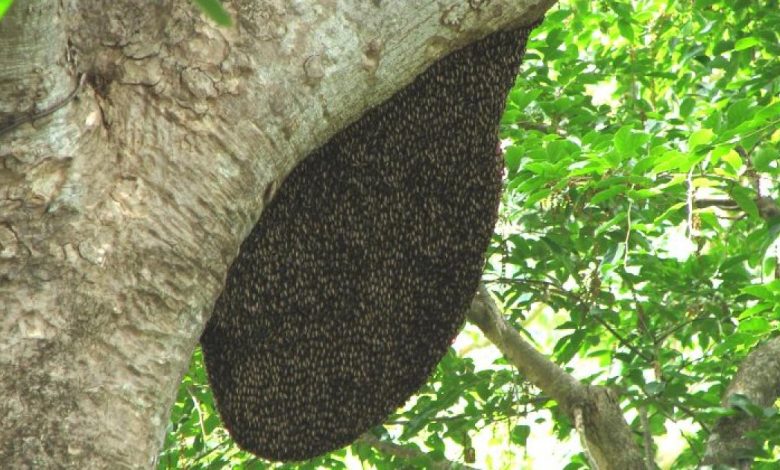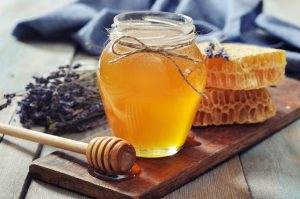Mountain Forest Honey: A Taste of the Wild Highlands
Mountain Forest Honey

Nestled high in the pristine and untouched landscapes of the wild highlands, mountain forest honey stands as a testament to the rich biodiversity and unique flora that characterize these elevated terrains. Beyond its delectable taste. It holds a special place in the hearts of those who appreciate the connection between nature and their taste buds. In this blog, we will delve into the enchanting world of mountain forest honey, exploring its origins. The process of harvesting, its unique flavor profile. And the sustainable practices that make it an ethical and environmentally conscious choice for honey enthusiasts.
The Origin Story:
 The production of mountain forest honey is deeply intertwined with the untamed beauty of high-altitude landscapes. These remote, often inaccessible. Areas are home to a diverse array of plant species that contribute to the distinctive taste and quality of the honey. Bees in these regions collect nectar from a myriad of wildflowers, herbs, and shrubs that flourish in the challenging, yet rewarding, mountainous environment. This results in a honey with a complex flavor profile, capturing the essence of the surrounding flora.
The production of mountain forest honey is deeply intertwined with the untamed beauty of high-altitude landscapes. These remote, often inaccessible. Areas are home to a diverse array of plant species that contribute to the distinctive taste and quality of the honey. Bees in these regions collect nectar from a myriad of wildflowers, herbs, and shrubs that flourish in the challenging, yet rewarding, mountainous environment. This results in a honey with a complex flavor profile, capturing the essence of the surrounding flora.
Harvesting Process:
Harvesting mountain forest honey is no simple task, as it involves navigating challenging terrains and working closely with the rhythms of nature. Beekeepers in these high-altitude regions often rely on traditional and sustainable methods to collect honey without causing harm to the delicate ecosystems. These methods include carefully extracting honeycombs without disrupting the bees’ natural habitat. Ensuring minimal impact on the surrounding flora and fauna.
In some cases, beekeepers may use smoke to calm the bees and make the extraction process safer for both the bees and themselves. This centuries-old technique, still practiced by many indigenous communities, highlights the harmony between humans and nature, where the goal is not to exploit but to coexist.
Unique Flavor Profile:
One of the most compelling aspects of mountain forest honey lies in its distinct flavor profile, which is a direct result of the diverse range of plants the bees forage on. The honey often exhibits a robust and complex taste, with notes of floral sweetness, hints of herbs, and sometimes even a touch of earthiness. This diversity in flavors is what sets mountain forest honey apart from its counterparts produced in more homogeneous environments.
The high-altitude terrain and challenging weather conditions also contribute to the honey’s unique characteristics. The slow crystallization process that occurs naturally in mountain forest honey creates a fine, velvety texture, making it a delight to spread on toast or drizzle over desserts.
Health Benefits:
Beyond its exceptional taste, mountain forest honey boasts a range of health benefits. Rich in antioxidants, vitamins, and minerals, this honey is believed to have anti-inflammatory and antibacterial properties. The presence of polyphenols and other bioactive compounds contributes to its potential health-promoting effects. Some enthusiasts also claim that consuming local honey may help alleviate seasonal allergies, although scientific evidence supporting this claim is limited.
Sustainable and Ethical Practices:
In the wake of growing environmental concerns, consumers are increasingly drawn to products that embrace sustainable and ethical practices. Mountain forest honey, harvested from remote and untouched landscapes, often adheres to these principles. Beekeepers in these regions recognize the delicate balance between human activities and nature, and as a result. They adopt practices that ensure the well-being of both the bees and the environment.
Sustainable beekeeping practices include the use of eco-friendly hives. Minimal interference with the natural behavior of bees, and the promotion of biodiversity in the surrounding areas. By prioritizing the health of the ecosystems in which they operate. Beekeepers contribute to the preservation of these pristine mountain environments.
Supporting Local Communities
Choosing mountain forest honey is not only a culinary adventure but also a way to support local communities that depend on sustainable beekeeping for their livelihoods. In many high-altitude regions, beekeeping has been a traditional practice passed down through generations. By purchasing honey from these areas, consumers actively contribute to the economic empowerment of local beekeepers and their communities.
Moreover, sustainable beekeeping practices often involve education and collaboration with indigenous communities. Fostering a deeper understanding of the delicate balance between human activities and the natural world. This engagement helps preserve traditional knowledge and ensures the continued well-being of these unique ecosystems.
Conclusion:
Mountain forest honey offers a unique and flavorful experience that goes beyond the ordinary. Its origin in the wild highlands, the intricate harvesting process, and the commitment to sustainable and ethical practices make it a symbol of the delicate balance between humans and nature. As consumers increasingly seek products that align with their values, mountain forest honey stands as a beacon of authenticity. Connecting people with the untamed beauty of the high-altitude landscapes. So, the next time you savor a spoonful of mountain forest honey, remember that you are not just enjoying a sweet treat. You are partaking in a journey through the wild, tasting the essence of the untouched highlands.




